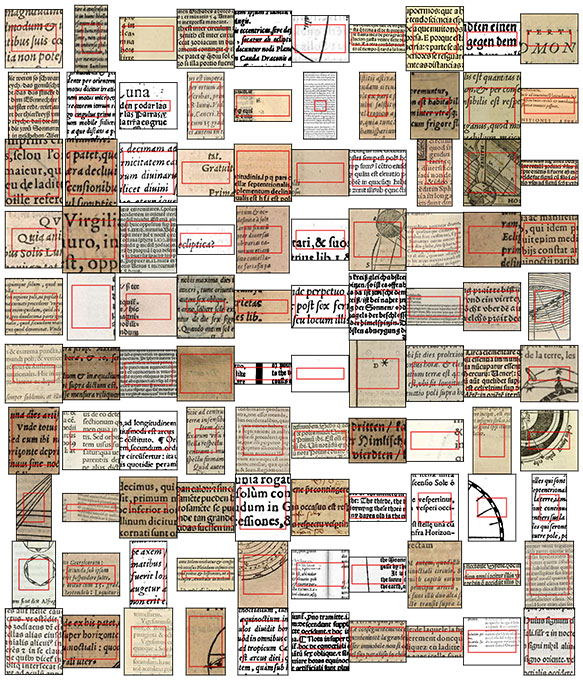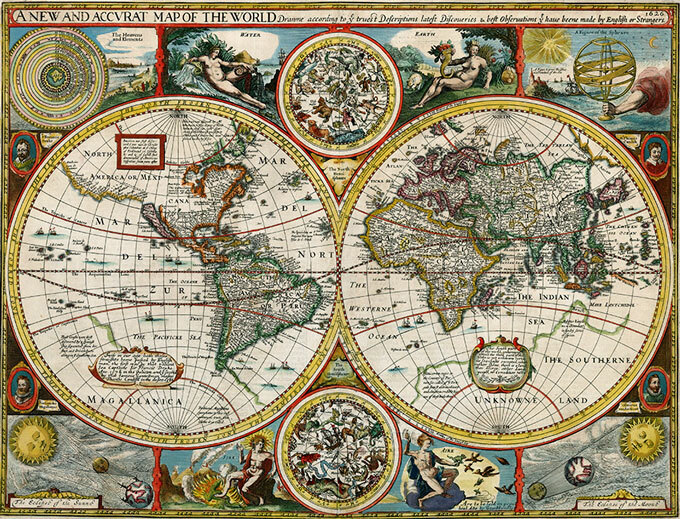Historians working with an artificial intelligence assistant have begun to trace the spread of astronomical thinking across Europe in the early 1500s.
The analysis contributes to challenging the idea of the “lone genius” of scientific revolutions. Instead, it shows that knowledge of star positions was widespread and used in a variety of disciplines, researchers report Oct. 23 in Advances in science.
“We can see here the first formation of a proto-international scientific community,” says computer historian Matteo Valleriani of the Max Planck Institute for the History of Science in Berlin.
Valleriani and colleagues used AI to examine a digitized collection of 359 astronomy texts published from 1472, less than 20 years after the Gutenberg Bible was first printed, to 1650. (SN: 5/31/05).
These texts were used to teach introductory classes on geocentric astronomy—the view of the cosmos that places the Earth at the center and moves outward in sequential spheres. Knowing the positions of the stars was thought to be important for studying everything from medicine to Greek and Latin poetry, so introductory astronomy classes were mandatory for all students. Among other things, students learned to use the sun’s position in the zodiac constellations to figure out the date of an event that occurred in antiquity, before standardized calendars were common.
Studying these past texts can give historians an idea of the background knowledge that most educated people had about the universe and how that understanding changed over time.

The data included 76,000 pages of text, images and numerical tables, many with different fonts, formats and layouts. A historian may be able to analyze a handful of books in a single career. But Valleriani and colleagues wanted to study them all.
“What we wanted to know, in general, is what students were learning in astronomy over these 180 years and across Europe,” says Valleriani. “That was humanly impossible.”
The team used machine learning to identify 10,000 unique number tables in textbooks. Next, they trained an AI model to recognize the individual numbers on the tables. “This was extremely difficult because the tables are not formatted in the same way,” says physicist and machine learning expert Klaus-Robert Müller of the Technical University of Berlin. “It’s all quite a mess.”
After the AI had extracted all the numbers, it compared the different tables one by one and highlighted the similarities and differences. For example, some textbooks were essentially reprints of an earlier edition, and their tables were almost identical. Others introduced new ideas or new ways to use astronomical data.
The AI couldn’t tell the researchers what those similarities and differences meant (SN: 8/2/24). But it can give them a place to look for trends or moments of change.
“It’s going from using AI as a tool, to help do something I had envisioned, to using AI as a team member, suggesting new solutions that I couldn’t see,” says Valleriani.
A common story about astronomy in this time period is that individual heroes of science, such as Copernicus, Galileo, and Kepler, shocked the world by showing that the Earth is not the center of the universe.
But historians of science have moved away from the idea that science is run by such lone geniuses who make great discoveries. (SN: 3/5/16). Those discoveries had social, political, and cultural contexts, and they had to be disseminated in some way to the wider culture.
“When you deal with the scientific revolution, the triumph of the Copernican worldview, we know the big names,” says computer scientist Jürgen Renn of the Max Planck Institute for Geoanthropology in Jena, Germany, who was not involved in the new work. “But in Europe, it was a broad movement. There were many participants.”
One of the team’s key findings is that textbooks printed in Wittenberg, Germany, in the 1530s were widely imitated elsewhere in Europe. Similar books that were sold in cities with larger markets, such as Paris and Venice, created a new, homogeneous approach to astronomy.
Valerian finds this ironic. Wittenberg is best known for being the town where Martin Luther started the Protestant Reformation, which split a new branch of Christianity from the Catholic Church.
“It sounds paradoxical,” says Valleriani. “While Wittenberg and the Protestant Reformation were dividing Europe … and creating the background against which the wars were fought, at the same time, Wittenberg was able to develop a scientific approach to the level of education that was actually taken up everywhere.”

There are limitations to this type of research, the team points out. Historical records are always incomplete, and historians must select a subset of that record to focus on. AI can’t account for that kind of selection bias. Human historians should always be part of the process, the researchers point out.
This work “shows how historians in the future can engage with AI methods and use them intelligently without this utopian or dystopian illusion that they can do the work for you,” says Renn. “They’re just a fantastic new tool that helps us understand history as a broad stream of human action and human thinking, rather than just a series of isolated events.”
#historians #trace #astronomical #ideas #spread #16th #century
Image Source : www.sciencenews.org